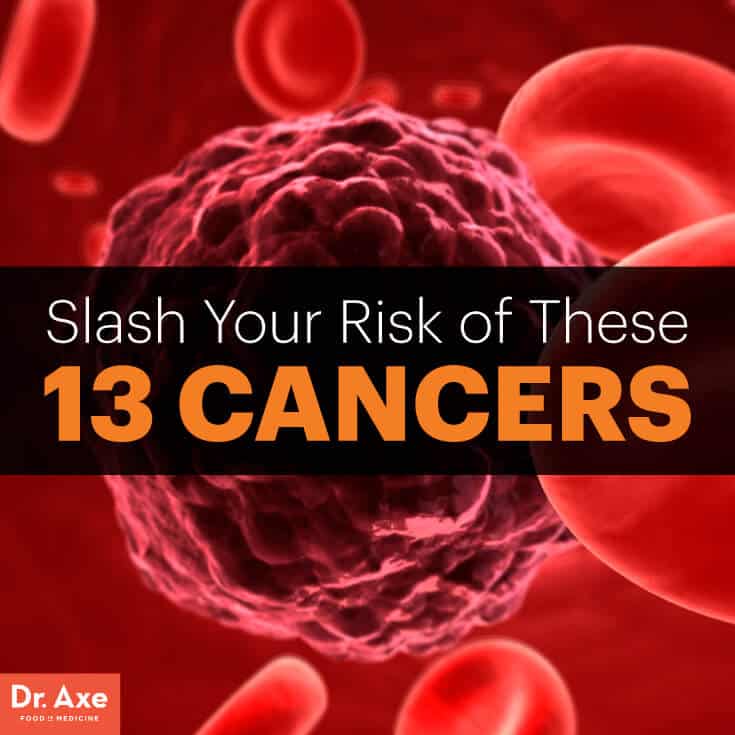This Dr. Axe content is medically reviewed or fact checked to ensure factually accurate information.
With strict editorial sourcing guidelines, we only link to academic research institutions, reputable media sites and, when research is available, medically peer-reviewed studies. Note that the numbers in parentheses (1, 2, etc.) are clickable links to these studies.
The information in our articles is NOT intended to replace a one-on-one relationship with a qualified health care professional and is not intended as medical advice.
This article is based on scientific evidence, written by experts and fact checked by our trained editorial staff. Note that the numbers in parentheses (1, 2, etc.) are clickable links to medically peer-reviewed studies.
Our team includes licensed nutritionists and dietitians, certified health education specialists, as well as certified strength and conditioning specialists, personal trainers and corrective exercise specialists. Our team aims to be not only thorough with its research, but also objective and unbiased.
The information in our articles is NOT intended to replace a one-on-one relationship with a qualified health care professional and is not intended as medical advice.
Your Risk of 13 Cancers Is Lower When You Exercise
June 13, 2017

You may already know one of the benefits of exercise includes optimizing your body to fight disease. Now, we have very robust, specific evidence showing that a solid prescription of physical activity can drastically lower your risk of 13 different types of cancers! I can’t stress this enough — this is empowering news that we all need to embrace.
The study, published in JAMA Internal Medicine, looked at information from 1.4 million people ages 19 to 98 collected over the course of about 11 years. Researchers from the National Institutes of Health, Harvard University and other leading global research organizations gleaned data on people’s exercise during leisure time (things like brisk walking, swimming and running) and at what intensity. (1)
People who were most active enjoyed a reduced risk of 13 different types of cancers compared to those who exercised the least and lived sedentary lifestyles. Exercise appeared to be most protective against esophageal cancer (42 percent lower risk), followed by liver cancer (27 percent lower risk) and lung cancer (26 percent lower risk).
Those who exercised the most enjoyed a 23 percent lower risk of kidney cancer, a 22 lower risk of gastric cardia (a type of stomach cancer), a 21 percent lower risk of endometrial cancers, a 20 percent lower risk of myeloid leukemia, a 17 percent lower risk of myeloma, a 16 percent lower risk of colon cancer, a 15 percent lower risk head and neck cancer, a 13 percent lower risk of both rectal and bladder cancers and a 10 percent reduced risk of breast cancer. (The study did find exercise slightly increased the risk of melanoma and a type of slow-growing prostate cancer.)
The researchers note that this was an observational study so the link between exercise and cancer reduction is “proven,” but we do know that exercise changes hormone levels, the degree of disease-causing inflammation, digestion and overall energy balance in a way that could likely contribute to the lower risk. (2)
It’s Time to Get Moving
Hundreds of past studies suggest that exercise holds the power to lower the risk of specific types of cancers. This monster of a study, though, should inspire doctors to prescribe exercise for the powerful medicine it is — and serve as inspiration for us to all get moving more throughout our days. (You aren’t still sitting down while reading this, are you?)
The point is you don’t need to spend hours a day exercising. This study found people who exercised at a moderate intensity for even shorter bouts of time enjoyed cancer prevention benefits.
Because long bouts of cardio weren’t necessary to produce the cancer-protective benefits found in this study, HIIT workouts, or high-intensity interval training that I like to call burst training, could also be a great option, especially if you’re crunched for time.
Exercise should become part of your daily culture, so be sure to experiment and find something you truly enjoy. Here are a few different options to explore:
- Rebounding or trampoline workout
- Qigong
- Tabata workout
- Barre workout
- Kettlebell workout
- One-minute workout
Final Thoughts on Exercise and Reducing Cancer Risk
The large study that looked at more than 1.4 million people and how exercise impacted their risk of different cancers found that those who exercised the most enjoyed a reduced risk of 13 different cancers, including common cancers like breast, lung and colon cancers, compared to those who lived sedentary lifestyles. This is wonderful, empowering news. Use this as daily inspiration to become more active and your body will thank you.
Read Next: Did Our Ancestors Sleep More Than Us?










